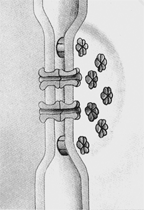Which of these organisms most contributes to the global methane oxidation and greenhouse gas conversion?
A. Chlamydia trachomatis
B. Bacteroides fragilis
C. Treponema pallidum
D. Acidimethylosilex fumarolicum
Answer: D
You might also like to view...
The structures in this figure:a
provide anchorage points between adjacent cells.
b. allow the transport of small molecules and ions between adjacent cells.
c. allow passage of materials through intercellular spaces.
d. prevent the passage of materials through intercellular spaces.
e. can only be found in plants.c
Match the following letters to the number with which they best correspond.
A. Obesity rates are increasing. B. What are some causes of obesity? C. Drinking sugary drinks leads to obesity. D. People who regularly consume sugary drinks with their meals will have a higher likelihood of being obese than people who do not. E. This is a generalization that describes a consistent natural phenomenon for which there is incomplete scientific explanation. F. Hypothesis that has not been disproven after many years of rigorous testing. G. Compile test results and draw conclusions from them. H. Submit the results and the conclusions to the scientific community.
A 25-year-old woman is seen on an emergency basis while in shock, with generalized flushing of the skin and mucous membranes. A tampon is present in her vagina. Toxic shock syndrome is suspected. Which of the following mechanisms is responsible for the toxic shock syndrome?
A. Inhibition of acetylcholine release B. ADP ribosylation of ribosomal protein C. Stimulation of G protein D. Cross-linking of MHC II and TCR proteins E. Activation of adenylate cyclase
A scientist performs a controlled experiment. This means that
A) the experiment is repeated many times to ensure that the results are accurate. B) the experiment proceeds at a slow pace to guarantee that the scientist can carefully observe all reactions and process all experimental data. C) two versions of the experiment are conducted, one differing from the other by only a single variable. D) one experiment is performed, but the scientist controls the variables.